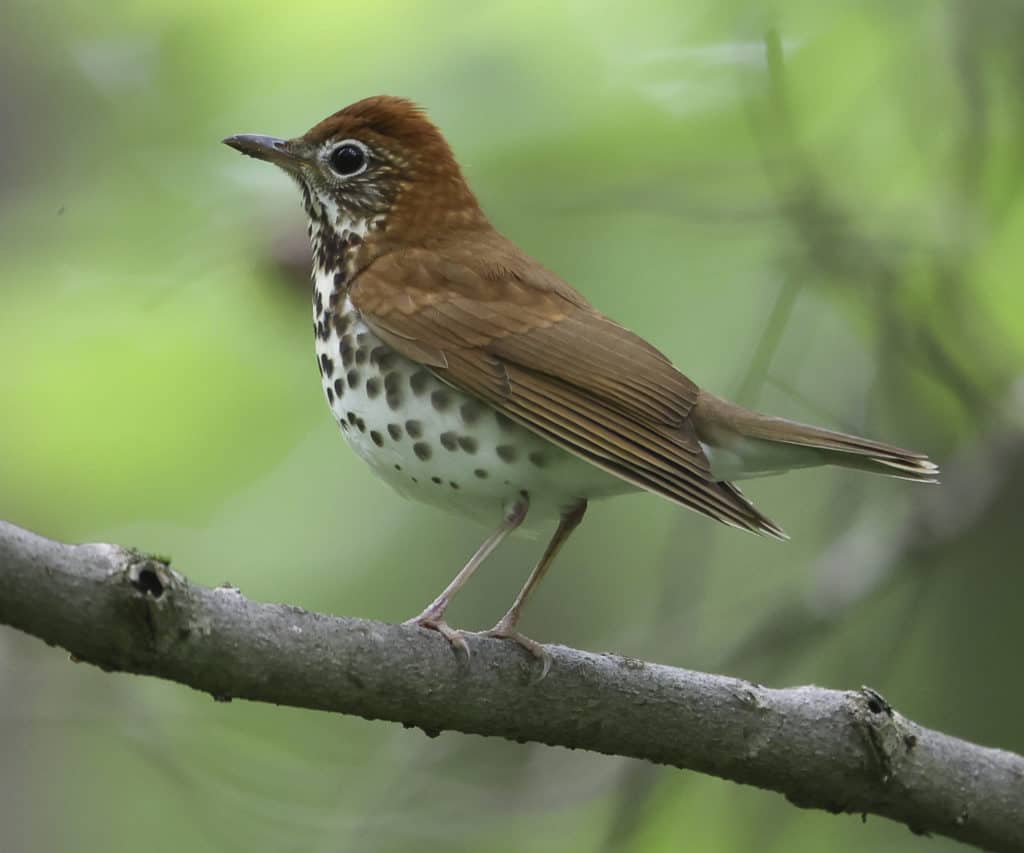Creature Feature

Spring Songs by the Thrush Family
By Wayne Bierbaum
Riva Regional Park is a small park near where I live with soccer fields, softball and baseball diamonds, and a multi-court basketball area. There also is a paved walking path around part of its perimeter. Once or twice a month, I go walking there and bring my camera. Part of the walk is along the edge of a wooded area with large trees in the back and younger trees near the path, and part is along an unkempt fence row and part goes through a forest with a small stream. Those various environments mean there are various animal species, too.
Each year there have been a couple of families of wood thrush that live in the woods by the stream. This weekend, I heard the melodic calls of the birds as I took my walk. Their voice sounds like it comes from an echo chamber. I heard two other thrush species, too, the hermit thrush and the American robin.
All three species can be found in this area and all have decent singing voices. They feed on similar foods, worms, insects, and berries. They differ in where they prefer to live. The wood thrush is associated with the deep woods of old forests. It is reddish-brown in coloration and has almost black spots on its white chest. The hermit thrush is a darker tan color but a little reddish in its tail and has brown streaky spots on a paler chest. They seem to prefer younger woods and the edge of woods. The American robin seems to be found everywhere but is comfortable foraging in open fields and unlike the other two thrushes, has easily adapted to living around humans. They are the largest of the species and have a yellow bill, dark gray back, and a reddish chest.
Other thrush species migrate through our area to northern forests. Swainson’s thrush, Bicknell’s thrush, grey-cheeked thrush, and the veery are similar-looking birds that migrate through our area. They are often confused with the hermit thrush (which has a distinctive reddish tail).
The song of the wood thrush is worth listening to, preferably in person. They are found in most of the older deciduous forests in our area but I know that early in the morning, before 9 a.m. they can be heard at Riva Regional Park. Follow the paved path clockwise from the basketball court and listen near the second small bridge.
Hear the song at AllAboutBirds.com by Cornell University Ornithology (https://www.allaboutbirds.org/guide/Wood_Thrush/overview) and on the Merlin Bird ID smartphone app.
